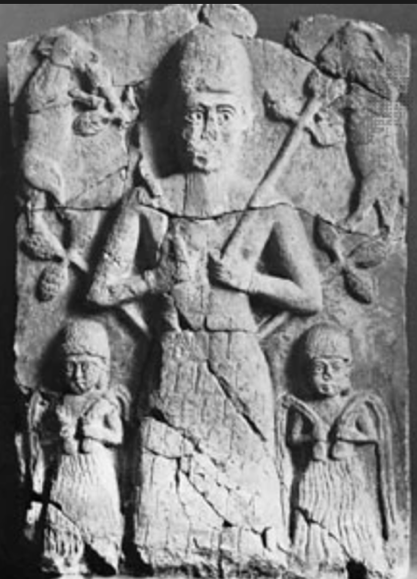
As we enter the month of Tammuz on the Jewish calendar, we step into a season steeped in myth, mourning, and memory. Interestingly, the name Tammuz comes from Babylonian tradition. Tammuz was a beautiful young vegetation god who died, was mourned, and then returned to life.
Also known as Dumuzi, Tammuz was associated with the fertility of the land—a corn god whose death marked the drying of the fields—the tears of those who mourned him were believed to fertilize the soil for future harvests. He was also known as Dumu-zi-abzu, Tammuz of the Abyss, a name that links him to water—not only through tears and the primordial waters of creation, but also through the rivers that sustained Babylonian agriculture.
The mourning of Tammuz was a ritual event, in which women gathered to weep for the dying god in acts of devotion that mirrored the agricultural cycle: the seed buried in the soil was symbolic of death, watered or revived by tears, to sprout and be reborn in the next season. A powerful metaphor for the life cycle (birth, death and rebirth) and moving through grief.
Tammuz in the Tanach
Tammuz makes a brief but pointed appearance in the Tanach, in the book of Ezekiel:
Then [God] brought me to the entrance of the north gate of the House of YHVH; and there sat the women, bewailing Tammuz.
The prophet Ezekiel is outraged. The weeping for Tammuz is framed not as sacred, but as idolatrous—a betrayal of covenantal faith. Here, Babylonian religious practice crosses into Israelite consciousness but is rejected and shut down.
Mourning in Jewish Time: The 17th of Tammuz to Tisha B’Av
Coincidentally—or perhaps not—the month of Tammuz also begins our own traditional season of mourning: the Three Weeks, which culminate in Tisha B’Av, the day of destruction. On the 17th of Tammuz, we commemorate the breach of Jerusalem’s walls—an ominous precursor to the fall of the Temple. By Tisha B’Av, we are fully immersed in mourning over the destruction of both Temples and other collective Jewish tragedies.
While distinct from the mourning of Tammuz in Babylon, echoes linger. Some scholars suggest that though official Tammuz cult practices were never sanctioned in ancient Israel, remnants may have survived “in the streets of Jerusalem and other cities,” as Jastrow writes—not in the Temple, but among the people.
What Do We Make of All This?
The human impulse to ritualize grief—to mourn what is lost in nature and in society—is still with us. Tammuz reminds us of the ancient roots of spiritual practice, and of the ongoing tension in Jewish tradition between integrating with the cultures around us and celebrating the particularity of our Jewish identities with their unique customs, rituals and folkways.
This year, we don’t have to look far to feel the sorrow this season invites. As we enter Tammuz, our hearts are already heavy—with grief for lives lost, for communities shattered, for the pain in Israel and Gaza, Iran, Ukraine, and other places torn by war and violence. We grieve also for the erosion of democratic values and freedoms closer to home.
May we learn from our ancient, cross-cultural spiritual roots and allow our tears to sow seeds of compassion, justice, and peace.
May not all hope be lost as we continue to keep our hearts open. May our tears flow together and form a stream of healing that irrigates the soil—so it becomes fertile ground for creativity, bridge-building, and repair. May we be patient and steadfast on this path and hold one another close.
Chodesh Tov!
B’ahavah,
Rav Gavrielle


